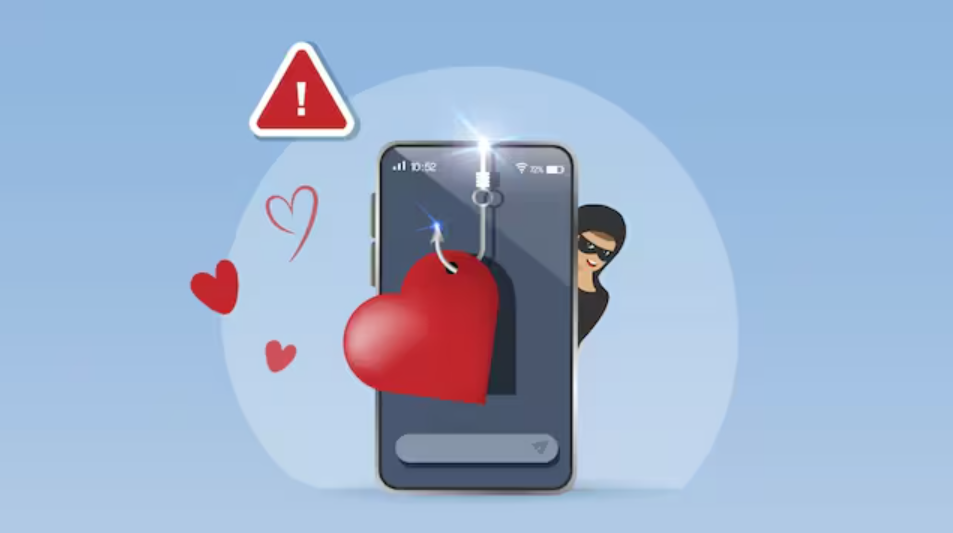Attractive profile pictures and exciting chats in online dating often promise more than they can deliver in reality. What many users don’t realize is that many seemingly real profiles actually belong to paid employees. We’ll show you how to spot fake profiles.
The most important things in brief:
- Many online dating portals use profiles that are managed by paid employees of the portals.
- Of course, they have no real interest in getting to know each other.
- Users cannot be sure that they are flirting with real private individuals.
- Dating portals must clearly indicate fake profiles.
When flirting, the person you’re talking to is often a paid employee of the respective portal. While many online dating portals advertise real contacts, they often employ so-called moderators or controllers. As a user, you’re not communicating with real partners, but with employees of the provider, who are obviously not available for meetings.
It’s not always possible to tell at first glance whether a potential partner is genuine. The use of paid employees is usually not specifically indicated. Even if there are indications, they are not prominently displayed, making them difficult for consumers to find.
However, a hidden notice in the terms and conditions is not sufficient. Rather, it must be clearly stated before registration that some user profiles are not real but are managed by the website’s own employees. This was the Berlin Regional Court’s ruling following a lawsuit filed by the Federal Association of Consumer Organizations against a dating portal .
With professional chat partners, it is fundamentally impossible for a chat to develop into a personal relationship beyond a business relationship. Therefore, if dating portals suggest that conversations with others could lead to an acquaintance or partnership, this advertising is misleading – according to the Flensburg Regional Court following a lawsuit by the Federal Association of Consumer Organizations.
Phrases that indicate fake profiles
Does a portal use fictitious profiles? In many cases, a quick look at the general terms and conditions (GTC) or terms of use is enough to help. Commonly used terms are “profiles” or “animators,” “controllers,” “CUsers,” “moderators,” or “moderated service.”
Phrases that indicate fake profiles include:
- “A male profile can be run by a female moderator, a female profile by a male moderator.”
- “It can be assumed that all female profiles are fictitious (…).”
- “You acknowledge and agree that these profiles are solely for your entertainment and to promote your use of our Service.”
- “The fact that contact information is provided for a profile does not mean that a real person is hiding behind the profile.”
- “(…) is a moderated service. (…) For this purpose, moderators employed by the operator create a large number of profiles of fictitious persons and impersonate these fictitious persons.”
- “Moderation serves to increase activity on the portal and thus the operator’s revenue. To this end, moderators employed by the operator create numerous profiles of fictitious people and impersonate these fictitious people.”
- “All statements and all personal data provided by the fictitious profiles are inventions of the moderators.”
- “The CUsers are intended exclusively for the fulfillment of virtual and erotic fantasies, and no real meetings are possible (…).”
- “The company points out that controllers employed by the company are deployed and active in the chat, who participate in the chat under multiple identities (m/f) (…).”
- “The provider expressly points out that operators employed in the chat are employed and active (…).”
- “To ensure functionality, as is common practice in such flirting portals and online dating services, the service provider employs animators who are not specifically identified in the system in order to make the dating platform attractive to users.”
How to recognize fake profiles
Not only can you find indications that paid employees are being used in the terms and conditions or terms of use. The profiles themselves also provide information. Here’s what you should pay attention to:
- Do the photos appear particularly professional, attractive, or almost unnatural? Then caution is advised. These are often images from the internet and not private snapshots or selfies.
- What does the profile look like? Does it sound too good to be true, or is there little information about the potential partner?
- Do details about interests remain very general and seem unpersonal?
- Can the other party only be contacted via premium rate numbers or SMS?
In all these cases, you should pay attention.
You can also learn how fraudulent providers try to entice users to sign contracts on dating websites via social networks and chats in our podcast:

is an American author, blogger, and cybersecurity specialist based in Florida. He developed an interest in writing during his school years, which later led him to create content aimed at raising awareness about various forms of online scams, particularly in the world of online dating.
On his platform, Scam Service Report, Hall shares analytical articles and practical advice to help users recognize and avoid traps set by scammers on dating websites. He describes common scam scenarios in detail—such as quick declarations of love, urgent requests for money transfers, refusal to engage in video chats, and attempts to move conversations off the dating platform.



